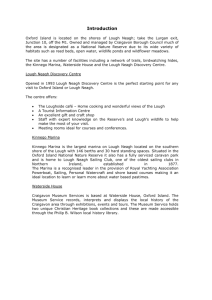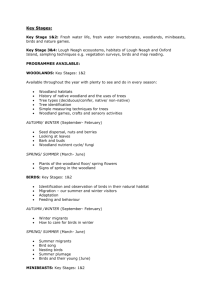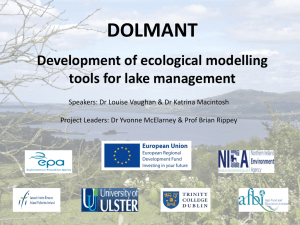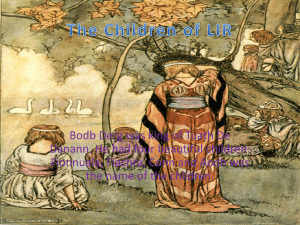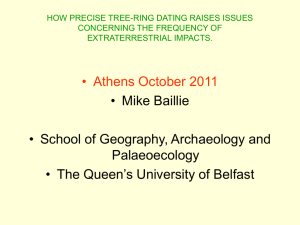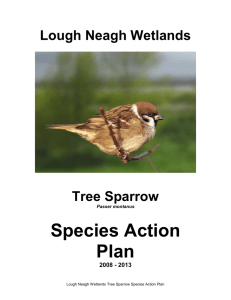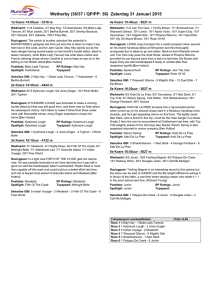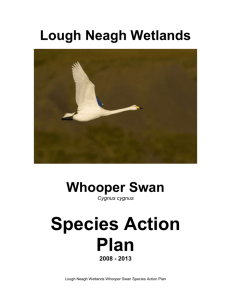Current freshwater research in the School of Biological Sciences
advertisement
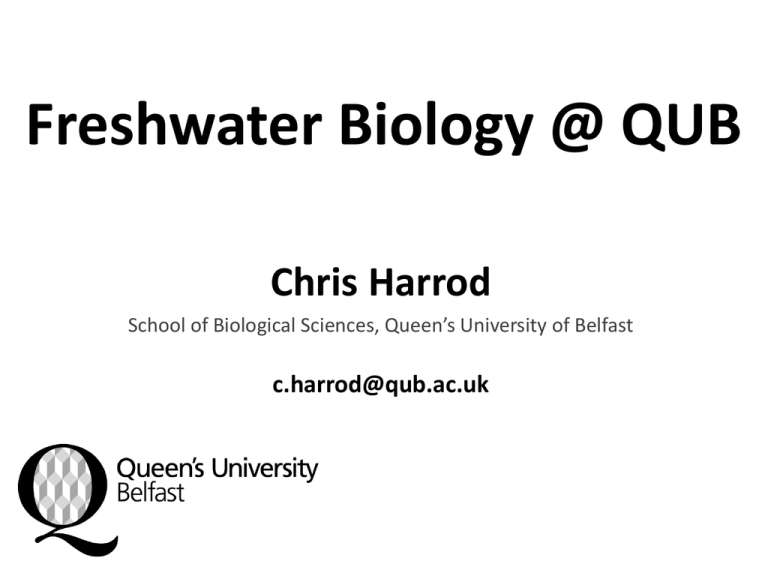
Freshwater Biology @ QUB Chris Harrod School of Biological Sciences, Queen’s University of Belfast c.harrod@qub.ac.uk www.fsbi.org.uk/2010 School of Biological Sciences: outline Organised into 2 separate research clusters: • Ecology, Evolution, Behaviour and Environmental Economics • Molecular Biosciences • Microbial ecology & functional biology • Identification, characterisation and function of aquatic toxins • Parasitology Freshwater research in EEBEE • 8 academics & > 15 postgraduate research students active in freshwater biology across Ireland, the UK, Europe and further afield • Broad scale – Molecule to ecosystem – Many different taxa (animal bias) Ecology, Evolution, Behaviour & Environmental Economics • Ecology – – – – – – Invasion ecology Autecology Limnology Ecosystem function Conservation Fisheries management • Scientific support to Lough Neagh eel fishery – Environmental impact assessment – Theoretical biology – Taxonomy – Water quality • Evolution – – – – Phylogeography Speciation & rapid evolution Population genetics Conservation genetics • • • • Margaritifera margaritifera Pollan Arctic charr Brown trout – Life history specialisation in invasive species – Divergent migratory components • Eels • Trout • Lampreys Ecology, Evolution, Behaviour & Environmental Economics • Behaviour – Individual specialisation – Interactions between native & invasive species • Functional response curves – Telemetry • Acoustic & radio • GPS • Depth & accelerometer – Foraging ecology of piscivorous predators • Environmental Economics – Economic valuation of environmental and natural resources. • Willingness to pay for ferox trout conservation Undergraduate aquatic ecology research Current activities Support for Lough Neagh fishery: • Few fisheries-independent data available for management and conservation – 122 random purse seine samples distributed across the main bed of the lough – Species abundance per haul – Individual length (± 1 mm) • First quantitative estimates to include eels since the ban on trawling (1980s) Lough Neagh: fish community Abundance Biomass River lamprey (Lampetra fluviatilis) in Lough Neagh • Evidence of freshwater feeding – Scarring of resident fishes, e.g. pollan • Relative impact of parasitism on different prey? • Evidence for anadromous v freshwater feeding? Evidence for freshwater foraging Inger et al 2010 J App Ecol 47: 121-129 Inger et al 2010 J App Ecol 47: 121-129 Isotopic variation in Lough Neagh Freshwater Isotopic variation in Lough Neagh & Strangford Lough Marine Freshwater Cormorants: energetic conduits between aquatic habitats Marine Freshwater Relative importance of freshwater v marine feeding in breeding cormorants • Bird Island breeding colony • Subset forage on L. Neagh (70 km) – Why? • Freshwater provisioned chicks have greater condition factors R2=0.44, P=0.01 Brown et al, in prep. Invasive species Invasive Aquatic Species in Irish water bodies • Funded through EPA STRIVE • Collaboration with National Biodiversity Data Centre, & Central Fisheries Board • QUB leading on WP2: Invasive species impacts on community structure and function – Lagarosiphon major in Lough Corrib – Leuciscus cephalus in the River Inny Lough Corrib and Lagarosiphon major Kevin Gallagher (PhD student) kgallagher23@qub.ac.uk Paul McIlwaine (Mphil student) pmcilwaine03@qub.ac.uk Marked habitat shift… Pre-invasion Post-invasion Growth rates differ in fish captured in invaded and native habitats Mean ± 95% CI back-calculated length at age 5 mm Hemimysis anomala (another Ponto-Caspian invader) Kevin Gallagher (kgallagher23@qub.ac.uk ) Collaboration: Dan Minchin & CFB The current distribution and status of Hemimysis in Ireland • Lough Ree: found at 4 sites (north, south, east and west of the lough). – considered widespread. • Also present in • Lough Key • Lough Boderg (Dr Dan Minchin) • no evidence of Hemimysis in Loughs Allen, Scur, Garadice, upper / lower Lough Erne or Lough Neagh. • Future work • More study sites • Examine relative abundance at invaded sites. • Public awareness campaign Hemimysis – examining feeding behaviour •Small bodied invasive Hemimysis anomala, killed and consumed x7 more juvenile Gammarus pulex than the larger-bodied native Mysis relicta, in one third of the time. 100 mean no. consumed 80 Hemimysis – 12 hours 60 40 20 Mysis – 40 hours 0 0 20 40 60 80 prey density 100 120 140 Invasive freshwater plants in Ireland: Distribution, spread and physiological responses to climate change Ruth Kelly (PhD student) rkelly35@qub.ac.uk Evolutionary ecology of the three spined stickleback in Ireland • Important (and undervalued) ecological role • Key model for evolution of new species • Almost unstudied in Ireland • Mark Ravinet (PhD student) mravinet01@qub.ac.uk Stickleback phylogeography • Mixture of lineages present in Ireland – and perhaps some uniquely Irish? Green = Irish populations Stickleback phylogeography • Mixture of lineages present in Ireland – and perhaps some uniquely Irish? Barents Sea/North Eastern European Green = Irish populations Trans-Atlantic Irish/Western European Funding bodies Fisheries Society of the British Isles
